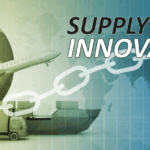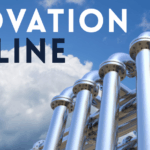[vc_row][vc_column][vc_empty_space][vc_column_text]
Innovation & Growth Leadership Summit Speaking Topics
The Innovation and Growth Leadership Summit is a spectrum of new technologies and processes. A place you’re able to learn, meet and network with others around the following topics.
[/vc_column_text][vc_column_text css=”.vc_custom_1752569227105{padding-top: 30px !important;}”]
Strategies for Maximizing Engagement, Networking, and ROI
Making the most out of a leadership conference doesn’t just happen—it’s the result of thoughtful planning and deliberate action. Here’s how organizers can amplify engagement, foster networking, and ensure a strong return on investment:
- Curate Compelling Speakers and Content
The right mix of visionaries, industry experts, and storytellers set the tone. Seek out voices that spark dialogue and inspire ideas—think TEDx-style energy meets hands-on insights from the likes of MIT, IDEO, or Google. - Design Interactive and Immersive Sessions
Move beyond passive listening. Incorporate roundtable discussions, live Q&A, and workshops where attendees can roll up their sleeves and tackle challenges together. A touch of gamification or live polling never hurts to keep energy high. - Facilitate Intentional Networking
Structured meetups, curated breakout groups, and networking lounges (both in-person and virtual) nudge strangers into future collaborators. Hacking serendipity—even through a clever app like Brella or classic name badge color-coding—often leads to the most valuable connections. - Encourage Pre- and Post-Conference Engagement
Whet appetites before the event with group chats, topic teasers, and speaker interviews. Afterward, keep the momentum alive by sharing highlights, session recordings, and actionable takeaways. - Measure, Reflect, and Iterate
Use feedback surveys, real-time analytics, and social listening tools to track what resonated and where next time could be even better. This cycle of continuous improvement ensures each conference delivers more value than the last.
By blending inspiration with practical tools and a dash of hospitality, organizers can create an environment where meaningful learning and vibrant networking happen naturally—a formula that pays dividends long after the last keynote wraps up.[/vc_column_text][vc_column_text css=”.vc_custom_1752569760369{padding-top: 30px !important;}”]
Navigating Change: Leadership Agility in the Digital Era
Change is the only constant—especially for leaders in today’s fast-moving digital landscape. This conference theme zeroes in on the skills leaders need to stay nimble, proactive, and ahead of the curve as technology rapidly evolves.
Expect sessions that dig into the practical aspects of shepherding teams through transformation, from embracing fresh ideas to leveraging the latest tools—think artificial intelligence, data analytics, and cybersecurity. Speakers will share actionable strategies for:
- Adapting to technological shifts without losing sight of core goals
- Driving innovation while managing risk
- Creating a culture ready to pivot when disruption comes knocking
In short, “Navigating Change” is all about equipping you and your organization to not just survive digital transformation, but to thrive—turning change from a headache into your next opportunity.[/vc_column_text][vc_column_text css=”.vc_custom_1752569845225{padding-top: 30px !important;}”]
The Importance of a Thoughtful Theme for Leadership Conferences
Selecting a conference theme isn’t just about setting the mood—it’s how you ensure the event delivers genuine value and speaks directly to the needs of your audience. A well-crafted theme becomes the backbone of your conference, guiding everything from the agenda to the conversations that unfold.
- Addressing Real-World Challenges: When the theme reflects current trends and pressing issues facing leaders today, attendees immediately sense its relevance. The sessions, case studies, and workshops can directly tackle their biggest questions, ensuring the takeaways are practical and actionable.
- Fostering Engagement: A sharp, resonant theme naturally attracts attendees who are passionate about the subject, sparking lively discussions and connection. This energy is contagious, making the event more than just a series of presentations—it becomes a forum for spirited exchange and new ideas.
- Connecting Content and Purpose: By anchoring the conference to a unifying idea, you create coherence across topics and speakers. Attendees are less likely to feel lost in a shuffle of unrelated sessions, and more likely to leave with a sense of overall purpose and direction.
- Reflecting Audience Needs: Maybe this year’s focus is navigating uncertainty or leading remote teams. When the theme mirrors the audience’s realities, it demonstrates that the event isn’t just for show—it’s designed with their growth in mind.
- Standing Out in a Crowded Field: In a world brimming with conferences and summits, a compelling theme helps your event rise above the noise. It sends a clear message that this is the place for fresh perspectives and forward-thinking leadership.
The upshot? The right theme is not just decorative—it’s the strategic element that weaves relevance, value, and impact throughout every aspect of your leadership conference.[/vc_column_text][vc_empty_space][vc_text_separator title=”Topics”][vc_empty_space][vc_row_inner][vc_column_inner width=”1/2″][vc_empty_space height=”25px”][vc_column_text]
Food Innovation: Recipes for Change
New technologies, emerging approaches for engagement, what today’s leading-edge eaters are predicting for new markets and how social media influencers, shipping bots, and new tastemakers will shape food choices and further define the future of food experience.[/vc_column_text][vc_empty_space height=”125px”][vc_empty_space height=”115px”][vc_column_text]
Macro-Trends and Multisensorial Experiences Driving Innovation Across Industries
Examples of 5-senses brand engagement from wearables, Agritech and AI, the future of health, wellness and multisensorial experiences and global case studies of disruptive innovation.[/vc_column_text][vc_empty_space height=”115px”][vc_empty_space height=”50px”][vc_column_text]
Bringing Product Sales to New Heights in the Age of Amazon
Amazon Vendor Central and Seller Central, Brand Registry, Tiered Pricing Operational Compliance & Chargebacks, Inventory Forecasting, New Item Setup. Merchandising, Prime Day Promotions, Brand Page Creation and Amazon Store Creation.[/vc_column_text][/vc_column_inner][vc_column_inner width=”1/2″][vc_empty_space height=”125px”][vc_column_text]
Collaborating with Food Entrepreneurs: A New Model for Starting and Scaling Up Business
Change Management – how to innovate within the construct of large institutions that aren’t as nimble, experimentation and quick wins, the rise of food incubators and accelerators, building diverse networks across the supply chain and understanding demand and market gaps.[/vc_column_text][vc_empty_space height=”100px”][vc_empty_space height=”45px”][vc_column_text]
Leadership Before Innovation – Four Key Ingredients
The Four Ingredients – Visionary vs. Sharing a vision, Diversity vs. Inclusion, Them vs. Us, and “In” vs. Integrity. Studies show that only 10-15% of ‘innovation’ programs are effective long term – instead we see one-hit wonders, base hits, the occasional home run.[/vc_column_text][vc_empty_space height=”125px”][/vc_column_inner][/vc_row_inner][vc_column_text css=”.vc_custom_1752569654401{padding-top: 30px !important;}”]
Innovation Leadership: Strategies for Fostering Creativity
What does it really take to spark creativity and lead innovation within an organization? This theme dives into the art (and science) of actually making innovation stick—not just talking about it in meetings with too many croissants.
Key conversation starters include:
- Adopting Design Thinking: How organizations are leveraging design thinking—not just as a brainstorming exercise, but as a tangible framework for solving complex problems and putting the customer’s needs front and center.
- Enabling Creative Problem-Solving: Proven strategies for nurturing experimentation, from hackathons and rapid prototyping to embracing failure as a badge of courage (looking at you, Google X), plus the small changes in meeting culture that unleash better ideas.
- Building an Innovation-Driven Environment: Tips for designing spaces and processes that foster collaboration, from cross-disciplinary teams to incentivizing idea sharing. We’ll look at real-world case studies from organizations who’ve made “creativity” more than just a buzzword.
- Empowering at Every Level: Practical ways leaders can encourage every team member—from the C-suite to the loading dock—to voice insights and try new approaches, creating a culture where fresh thinking bubbles up everywhere.
Expect discussions around how companies like IDEO, 3M, and LEGO build environments that continuously generate (and implement) new ideas, and why it’s critical for leaders to deliver more than lip service when cultivating innovation.
Studies show that only 10-15% of ‘innovation’ programs are effective long term – instead we see one-hit wonders, base hits, the occasional home run.[/vc_column_text][vc_column_text css=”.vc_custom_1752569661283{padding-top: 30px !important;}”]
Measuring the Impact: Turning Insights Into Action
So, how do you know if your leadership conference hit the mark or missed the bunt altogether? It’s not just about applause at the end—lasting impact runs deeper. To truly gauge success, you’ll want to blend tangible takeaways with feedback loops. Here’s how to step up your post-conference game:
- Poll your attendees right after the event. Use quick digital surveys or good old-fashioned feedback cards to capture immediate reactions—what inspired, what fizzled, and what left everyone hungry for more.
- Dive into engagement analytics: track session attendance, Q&A participation, networking connections made, and social media buzz. Did that panel on ethical innovation spark a flurry of LinkedIn shares or did your breakout on transforming supply chains get folks talking?
- Hold follow-up interviews with a handful of participants and speakers. Personal stories and anecdotes often reveal what mere numbers can’t.
- Don’t forget the long game! Six months down the line, check in again: Are attendees putting new tools, models, or connections to work in their organizations?
Use what you gather to adjust future agendas—maybe that hands-on workshop outperformed the keynote, or maybe your closing panel could use more time for audience questions. After all, the real value of measurement isn’t just in identifying which ideas soared but in shaping what comes next, making each event sharper, bolder, and even more relevant for tomorrow’s leaders.[/vc_column_text][vc_column_text css=”.vc_custom_1752569687191{padding-top: 30px !important;}”]
Inclusive Leadership and Diversity: Expanding the Conversation
From challenging boardrooms to buzzing startup kitchens, organizations are prioritizing diversity and empowerment like never before. Under the theme of Inclusive Leadership, you’ll dive into strategies and best practices that go beyond surface-level representation and focus on building workplaces where all voices are celebrated and elevated.
Topics under this theme may include:
- Advancing gender equality in leadership roles—what’s moving the needle, and what’s holding it back?
- Fostering multicultural teams and embracing global perspectives, from Tokyo to Toronto
- Designing policies and practices that support inclusivity and psychological safety
- Unpacking inclusive leadership styles—how leaders at Unilever, Google, or Ben & Jerry’s are setting new standards
- Allyship and mentorship: tools for supporting colleagues at every rung of the ladder
- Tackling unconscious bias and creating measurable frameworks for accountability
Hear from leaders who are championing authentic change, explore stories of transformation, and gather actionable insights to help nurture truly equitable workplaces. Inclusive leadership isn’t just a trend; it’s shaping the DNA of innovative organizations across every industry.[/vc_column_text][vc_column_text css=”.vc_custom_1752569711089{padding-top: 30px !important;}”]
Transformational Leadership: Fueling Change and Organizational Growth
Transformational leadership acts as a crucial catalyst for meaningful change and lasting organizational growth. Rather than simply managing the day-to-day, transformational leaders inspire teams to reimagine what’s possible—inviting fresh thinking, sparking enthusiasm, and empowering people to step up with bold new ideas.
With a focus on vision and purpose, these leaders:
- Foster trust by modeling integrity and openness.
- Build cultures where continuous learning and improvement are the norm.
- Encourage input from all corners of the organization, from the front lines to the C-suite.
- Motivate teams to stretch beyond their comfort zones, supporting experimentation (and embracing the lessons that come with the occasional flop).
Real-world examples abound: Companies like Google and Unilever have credited transformational leaders for rejuvenating their businesses, uniting teams around a bigger mission, and fueling innovation that keeps them ahead of the curve.
The ripple effect? Employees feel genuinely engaged and invested, which drives productivity and sparks a wave of positive change throughout the organization. In short, transformational leadership doesn’t just inspire—it mobilizes teams to achieve growth, outpace market shifts, and set a higher bar for what’s next.[/vc_column_text][vc_column_text css=”.vc_custom_1752569738104{padding-top: 30px !important;}”]
Enhancing Leadership Summits with Free Tools & Resources
To enrich your summit sessions and give attendees actionable next steps, consider offering a curated selection of complimentary resources designed to reinforce learning and spark further exploration. Here are a few crowd-pleasers you can add to your leadership toolkit:
- Growth Mindset Toolkits: Distribute downloadable guides packed with sample scripts, reflection prompts, and step-by-step frameworks inspired by the work of Carol Dweck and Mindset Works. Attendees can use these materials to kick off deeper conversations within their teams.
- Active Listening Assessments: Offer complimentary self-assessments from organizations like MindTools to help managers benchmark their listening skills, fostering more open and effective communication at every level.
- Critical Thinking Exercises: Tap into resources like the Foundation for Critical Thinking‘s question cards and case studies, which leaders can use to practice and sharpen their analytical abilities.
- Problem-Solving Worksheets: Share free templates and diagnostic tools, like those from Harvard Business Review, that help managers map out root causes and structure their approach to thorny challenges.
- Decision-Making Skills Quizzes: Let participants explore their decision-making profiles with assessments from platforms such as SkillsYouNeed, empowering them to identify sub-skills for targeted development.
- Collaboration and Conflict Management Guides: Provide access to tools like the Thomas-Kilmann Conflict Mode Instrument (TKI) sample materials, ensuring managers can both foster teamwork and navigate inevitable disagreements with finesse.
- Persuasive Communication Kits: Round out your offerings with communication strategy playbooks and influence checklists—think free modules from Toastmasters or the American Management Association—for anyone looking to master the art of stakeholder buy-in and social change.
These no-cost resources don’t just reinforce your summit themes—they create a bridge between inspiration and meaningful, real-world action.[/vc_column_text][vc_column_text css=”.vc_custom_1752569785434{padding-top: 30px !important;}”]
How Resilient Leadership Powers Through Adversity
Resilient leadership isn’t just a motivational buzzword—it’s the backbone for steering teams through the muddiest waters and coming out stronger on the other side. Like a seasoned captain guiding their crew through stormy seas, resilient leaders harness a toolkit that helps them and their teams weather setbacks and shifting tides.
Let’s look at the key ways resilient leadership turns pressure into progress:
- Championing Mental Health: Strong leaders prioritize their own mental fitness and encourage open conversation about well-being. They’re the ones who recognize when it’s time to check in—and when it’s time to ease off the gas.
- Nurturing Work-Life Balance: Rather than glorifying burnout, resilient leaders model healthy boundaries. They don’t just say “take care of yourself”—they show what it looks like in action.
- Preventing Burnout: By spotting early signs of stress, resilient leaders act before issues snowball. They create environments that offer support, flexibility, and—yes—permission to step back when needed.
- Fostering Team Cohesion: Adversity can fracture a team, but a resilient leader keeps everyone rowing in the same direction. Open dialogue, trust-building, and shared purpose go a long way.
Ultimately, resilient leadership multiplies benefits—not just for the leaders themselves, but for their entire teams. The result? A workplace where people feel safe to innovate, speak up, and stay engaged, even when the going gets tough.[/vc_column_text][vc_column_text css=”.vc_custom_1752569804533{padding-top: 30px !important;}”]
Sustainable Leadership – Building for the Long Haul
What, then, sets sustainable leadership apart? It’s not just about keeping the lights on—it’s about making decisions that ripple outwards, benefiting both the organization and the broader world around us. Sustainable leadership marries business performance with a responsibility to people and the planet, ensuring today’s successes don’t come at tomorrow’s expense.
At the core, sustainable leaders:
- Embed sustainability in strategy: They don’t treat environmental goals or community well-being as afterthoughts but build them into the business DNA.
- Lead by example: Whether in how they conserve resources, engage with local communities, or foster ethical cultures, their habits set the tone for everyone else.
- Champion diversity and inclusion: Not only because it’s fair, but because it fuels better ideas and more resilient organizations.
- Prioritize long-term value: Rather than chasing quick wins, they invest in people, innovation, and partnerships that stand the test of time.
The result? Organizations that thrive—not just financially, but in reputation and relevance—while leaving a positive mark on society and the environment. That’s why the most forward-looking leaders are doubling down on sustainable practices: they see it as the true path to lasting impact.[/vc_column_text][vc_column_text css=”.vc_custom_1752569823441{padding-top: 30px !important;}”]
Ethical Leadership: Trust as the Cornerstone
As the business world spins faster and transparency becomes table stakes, ethical leadership isn’t just a “nice to have”—it’s an absolute must for sustainable success. What separates leaders who inspire trust from those who merely occupy the corner office? It comes down to weaving integrity into every aspect of operations, decision-making, and culture.
Key elements of ethical leadership include:
- Corporate Social Responsibility: Making decisions that benefit not only shareholders, but also employees, local communities, and the environment—think Patagonia’s approach to sustainable sourcing or Ben & Jerry’s advocacy for social causes.
- Sound, Transparent Decision-Making: Leaders who don’t hide behind closed doors, but instead explain the “why” behind business choices, framing their reasoning in terms of fairness and long-term impact.
- Ethics as a Cultural Norm: Creating systems and rituals that celebrate ethical behavior—from clear codes of conduct to everyday conversations that reinforce what’s right, not just what’s profitable.
Building trust goes beyond slogans—it’s seen in consistent actions, how leaders address challenges, and how they foster dialogue at all levels. Teams are more likely to be innovative, engaged, and resilient when they know leadership values doing the right thing, even when it’s not easy. And as studies show, organizations grounded in ethical practices are magnets for top talent and loyal customers, all while paving the way for positive change in the world.[/vc_column_text][/vc_column][/vc_row]





